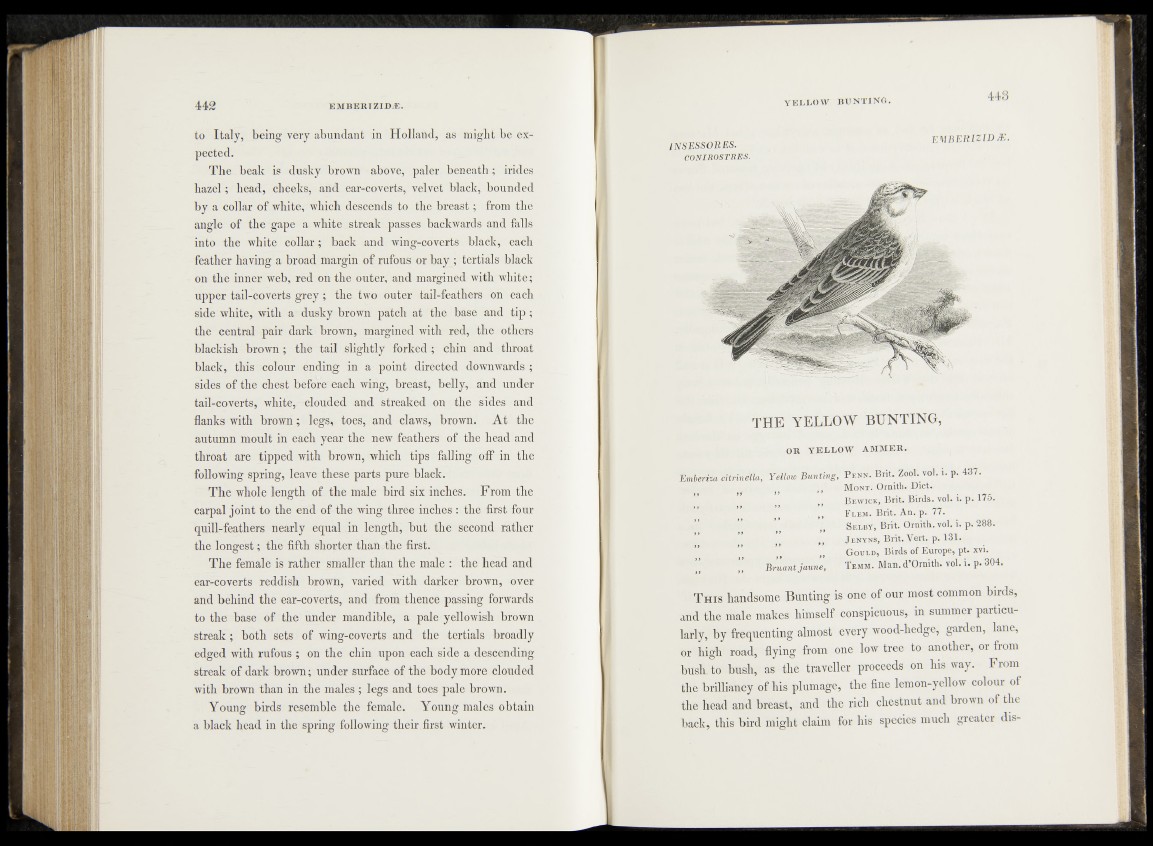
to Italy, being very abundant in Holland, as might be expected.
The beak is dusky brown above, paler beneath; irides
hazel; head, cheeks, and ear-coverts, velvet black, bounded
by a collar of white, which descends to the breast; from the
angle of the gape a white streak passes backwards and falls
into the white collar; back and wing-coverts black, each
feather having a broad margin of rufous or bay ; tertials black
on the inner web, red on the outer, and margined with white;
upper tail-coverts grey; the two outer tail-feathers on each
side white, with a dusky brown patch at the base and tip ;
the central pair dark brown, margined with red, the others
blackish brown ; the tail slightly forked ; chin and throat
black, this colour ending in a point directed downwards ;
sides of the chest before each wing, breast, belly, and under
tail-coverts, white, clouded and streaked on the sides and
flanks with brown; legs, toes, and claws, brown. At the
autumn moult in each year the new feathers of the head and
throat are tipped with brown, which tips falling off in the
following spring, leave these parts pure black.
The whole length of the male bird six inches. From the
carpal joint to the end of the wing three inches : the first four
quill-feathers nearly equal in length, but the second rather
the longest; the fifth shorter than the first.
The female is rather smaller than the male : the head and
ear-coverts reddish brown, varied with darker brown, over
and behind the ear-coverts, and from thence passing forwards
to the base of the under mandible, a pale yellowish brown
streak ; both sets of wing-coverts and the tertials broadly
edged with rufous ; on the chin upon each side a descending
streak of dark brown; under surface of the body more clouded
with brown than in the males; legs and toes pale brown.
Young birds resemble the female. Young males obtain
a black head in the spring following their first winter.
INSESSORES.
CONIROSTRES.
TH E YELLOW BUN T IN G ,
OR Y E L L OW A M M E R .
Emberiza citrinella, Yellow Bunting, P enn. Brit. Zool. vol. i. p. 4 3 7 .
M ont. O rn ith . D ie t.
B ewick, Brit. Birds, vol. i. p. 175.
F lem. Brit. An. p. 77.
S elby, Brit. Ornith. vol. i. p. 288.
J enyns, Brit. Vert. p. 131.
G ould, Birds of Europe, pt. xvi.
” ” Bruant jaune, T emm. Man. d’Ornith. vol. i. p. 304.
T his handsome Bunting is one of our most common birds,
and the male makes himself conspicuous, in summer particularly,
by frequenting almost every wood-hedge, garden, lane,
or high road, flying from one low tree to another, or from
bush, to bush, as the traveller proceeds on his way. From
the brilliancy of his plumage, the fine lemon-yellow colour of
the head and breast, and the rich chestnut and brown of the
back, this bird might claim for his species much greater dis